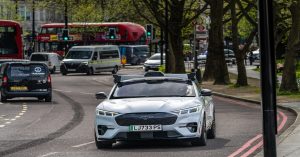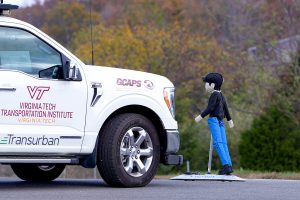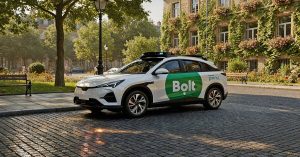As the automotive industry pivots toward producing connected, software-driven vehicles with over-the-air (OTA) updates, traditional OEMs are undergoing a profound transformation. The shift from hardware-focused engineering to a software-first development model is reshaping vehicle design, requiring automakers to reimagine not only technology stacks but also organizational processes and talent pipelines.
A recent panel discussion at the AutoTech 2025 conference in Michigan explored the challenges and opportunities of this transition. Moderated by Maite Bezerra, principal analyst for software-defined vehicles at Wards Intelligence, the panel featured experts from Stellantis, Bosch, Toptal, and the Scalable Open Architecture for Embedded Edge (SOAFEE) group.
From Hardware to Software: A Fundamental Industry Shift
Panelists highlighted how cloud-native tools, AI integration, and open-source platforms are central to the development of modern vehicles. Robert Day, representing SOAFEE, emphasized the move toward cloud-based development environments. “SOAFEE is about bringing modern software practices into automotive development,” he said. “We’re seeing teams use cloud tools and workflows—things that have long been standard in tech but are relatively new to car manufacturers.”
However, this migration isn’t without friction. Legacy automakers are confronting steep learning curves in integrating cloud platforms and software methodologies into vehicle production—a process complicated by the unique requirements of automotive systems, such as safety-critical features and heterogeneous computing environments.
“The car is not the cloud,” Day reminded the audience. “It comes with physical safety, real-time constraints, and unique hardware challenges.”
Talent, Tools, and Training: Building a New Workforce
To bridge the gap, automakers are increasingly seeking software talent from outside the traditional auto industry. Companies like Toptal are helping OEMs accelerate this transition by connecting them with specialized freelance developers and engineers. “We work with many automotive partners,” said Paul Timmermann, Toptal’s VP of Product.
Stellantis, one of the largest global automakers, is actively retraining its workforce to align with this new direction. “We’ve always been hardware-first,” noted Sangeeta Theru, Stellantis’ director of virtual validation platforms. “Now everything—from tools to processes—is turning software-first.”
She added that Stellantis has launched a major internal training initiative focused on Amazon Web Services (AWS) and cloud architecture. “It’s been a big push in upskilling our people,” she said.
Managing Massive Data for AI-Driven Systems
With the rise of advanced driver-assistance systems (ADAS) and autonomous driving capabilities, vehicles are now data-generating machines. A single car can produce terabytes of data daily from its cameras and sensors. When scaled across a fleet, this data runs into petabytes, posing enormous challenges in storage, processing, and transmission.
“Clearly, you’re not going to upload all of that data,” said Steven Miller, product manager for ADAS at Bosch. “The real challenge is knowing which data is valuable enough to send to the cloud.”
To address this, OEMs are building smart data pipelines—selecting, processing, and transferring only critical data for tasks like AI training, diagnostics, and predictive maintenance. Panelists agreed that effective data management will be a key differentiator for successful software-defined vehicle (SDV) strategies.
Open Source and Standardization on the Rise
Another emerging trend is the use of open-source software to reduce development time and cost. The SOAFEE initiative, in collaboration with industry players like Arm and Panasonic Automotive, aims to standardize vehicle architecture through cloud-native, open-source platforms.
“Open source helps establish a common standard, making collaboration between companies more feasible,” said Day. Still, he noted that automakers must strategically decide what components to keep proprietary versus what to open source.
Safety and liability have historically made OEMs cautious about open-source software in vehicles. However, the tide may be turning. According to an April 2025 report from the Eclipse Foundation, 79% of automotive software professionals now use open-source tools, and contributions to such projects are steadily rising.
Security: The Undervalued Priority
Even as the benefits of software-defined architectures become clearer, panelists warned that cybersecurity remains underfunded and underprioritized—especially as vehicles evolve into platforms for e-commerce, infotainment, and remote diagnostics.
“Security isn’t getting the attention or funding it truly needs,” Day cautioned. With connected vehicles potentially running up to 650 million lines of code, as reported by Arm, vulnerabilities could have wide-reaching consequences.
A New Era of Vehicle Innovation
Ultimately, software is not just an add-on—it’s reshaping how automakers design, build, and deliver cars. From redefining user experiences to altering how automakers interact with customers, software is now at the center of automotive innovation.
“This is one of the most transformational shifts we are seeing in the industry,” concluded Bezerra.







